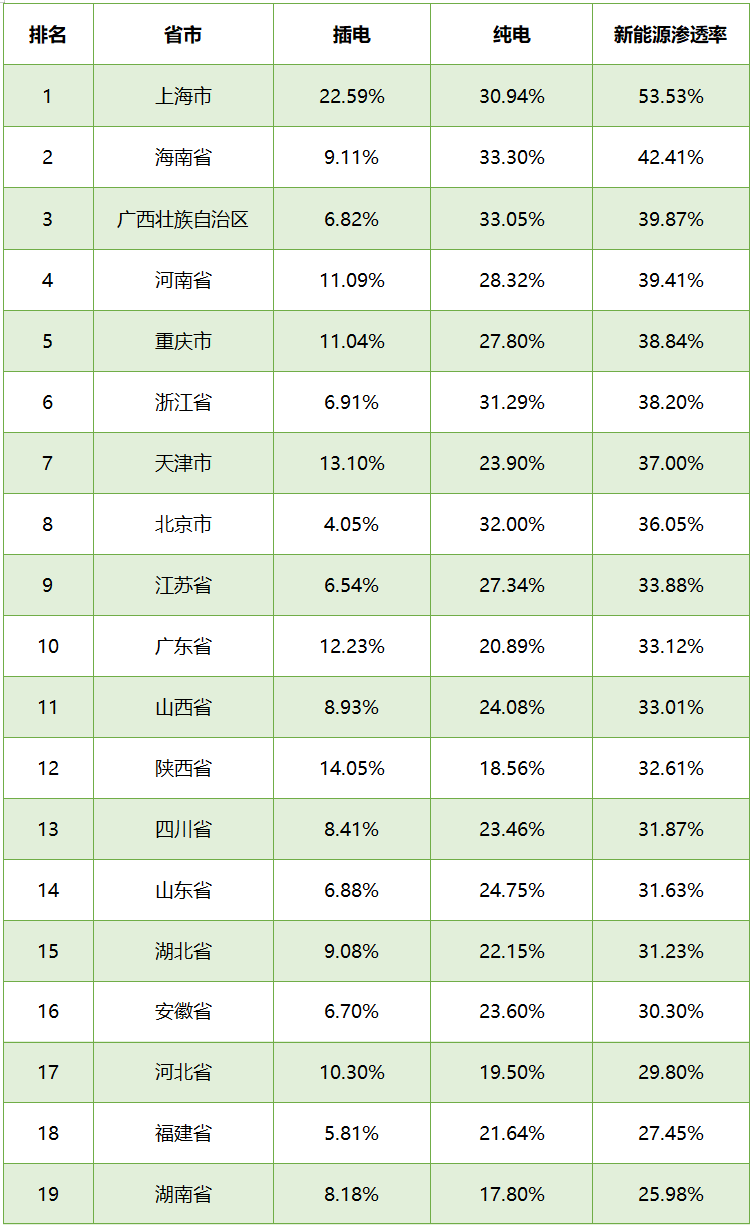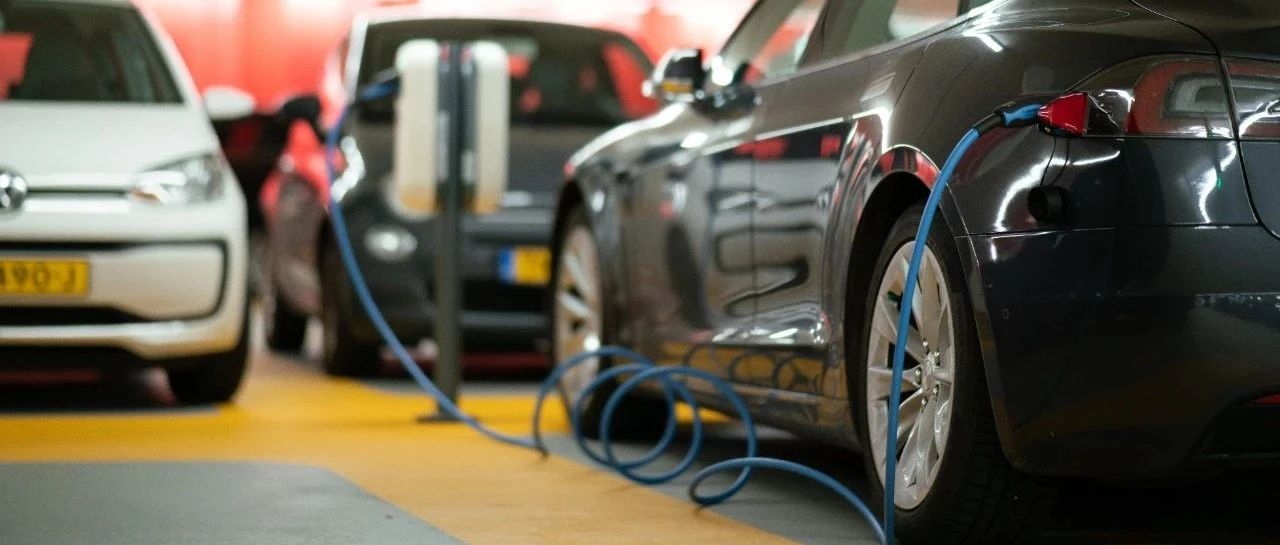Article by Zhang Ruichen
Edited by Wu Xianzhi
Recently, according to the data from China Association of Automobile Manufacturers, the delivery of passenger cars in November reached 1.649 million, with a 5.5% decrease year-on-year and a 2.2% decrease compared to the previous month. However, the delivery of new energy passenger vehicles in China reached 598,000, with a year-on-year growth of 58.2%. The penetration rate in November was 36.3%, a nearly 15% increase year-on-year.
According to the data from China Automotive Technology and Research Center, Photon (Guangzhou) Automotive Co., Ltd. ranks the penetration rate of new energy vehicles in 31 provinces and cities in November. Shanghai, with a penetration rate of 53.53%, topped the list. Hainan followed closely with a penetration rate of 42.41%. Worth mentioning, Guangxi Zhuang Autonomous Region ranked third with a new energy penetration rate of 39.87%.
Actually, we have always thought that new energy vehicles sold better in first-tier cities. However, in the list of provinces and autonomous regions where the penetration rate of new energy exceeded 35%, only Shanghai and Beijing were first-tier cities, while second-tier and third-tier cities like Hainan and Guangxi performed remarkably well. Among the 31 provinces and autonomous regions in China in November, 16 achieved a new energy vehicle penetration rate exceeding 30%, accounting for more than half. 12 provinces and autonomous regions with a new energy vehicle penetration rate of more than 15% but less than 30%, and only three provinces and autonomous regions, Heilongjiang, Qinghai, and Tibet, had a penetration rate of less than 10%.
Moreover, from the ranking, it can be seen that the penetration rate of new energy in the eastern and southern regions is significantly higher than that in the western and northern regions of China. Perhaps, influenced by temperature and terrain, the performance of new energy vehicles in complex environments in western and northern regions such as Geelyn, Liaoning, Heilongjiang, Xinjiang, Inner Mongolia, Tibet, etc., is slightly inferior. Coastal regions and provinces in East and South China have become the vanguard of the development of new energy vehicles.
At the 19th National Automobile Congress held this year, Xiao Yong, Deputy General Manager of Guangqi Aino New Energy Automotive Co., Ltd., said: “By 2025, the market penetration rate of new energy vehicles will reach about 50% or 60%.”
Shanghai is the first city to complete this goal. Before 2020, Shanghai was still characterized by high-displacement and high-average unit price joint venture luxury cars. On average, one out of every three cars sold was a high-displacement luxury car. Now, for every two cars sold in Shanghai, one is a new energy vehicle. It is expected that by 2025, the penetration rate of new energy vehicles in Shanghai will reach 80%, and the number of new energy vehicles will exceed 2 million. As of the end of October 2022, Shanghai had a motor vehicle holding of 5.09 million, including 4.51 million automobiles and 710,000 new energy vehicles.
 Hainan’s second-place ranking is not surprising, as it has a tropical monsoon climate that is most suitable for new energy vehicles, and it is also one of the provinces in China that announced the earliest ban on the sale of fuel vehicles, stating that “by 2030, the sale of fuel vehicles will be completely prohibited on the entire island of Hainan”. Not only that, Hainan also has actions in terms of new energy vehicle purchase subsidies and infrastructure, not only can you get purchase subsidies, but you can also apply for subsidies for charging fees.
Hainan’s second-place ranking is not surprising, as it has a tropical monsoon climate that is most suitable for new energy vehicles, and it is also one of the provinces in China that announced the earliest ban on the sale of fuel vehicles, stating that “by 2030, the sale of fuel vehicles will be completely prohibited on the entire island of Hainan”. Not only that, Hainan also has actions in terms of new energy vehicle purchase subsidies and infrastructure, not only can you get purchase subsidies, but you can also apply for subsidies for charging fees.
If the development of new energy in Hainan is a trend of the environment, then the penetration rate of new energy in Guangxi to third place is also related to policy. Guangxi has preferential policies in many aspects, such as charging, parking, electricity prices, and road rights. For example, when new energy vehicles park in parking lots or parking spaces set up on both sides of municipal roads that are invested by the government or using state-owned resources, the parking fees will be halved; when they charge in parking lots invested by the government or using state-owned resources, they can enjoy the right to free parking; and new energy operation vehicles purchased locally in Guangxi can enjoy an annual electricity subsidy of 4,000 yuan per vehicle.
Final Words
The current total penetration rate of new energy vehicles in November 2022 is 33.13%. With the gradual infiltration of national new energy policies, more second- and third-tier cities will also take new energy vehicles as the main consumer force. And with the advancement of new energy vehicle battery technology to address the impact of complex environments, it is believed that the penetration rate in the Huaxi and North China regions will also improve.
This article is a translation by ChatGPT of a Chinese report from 42HOW. If you have any questions about it, please email bd@42how.com.
